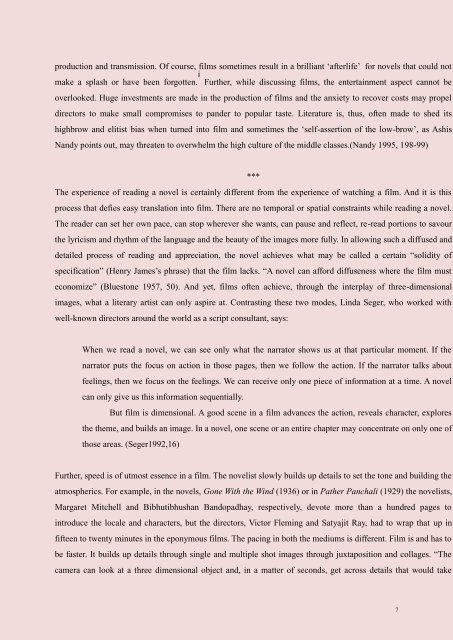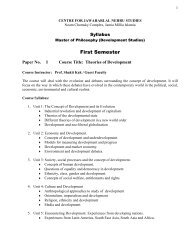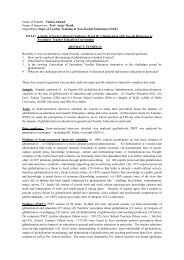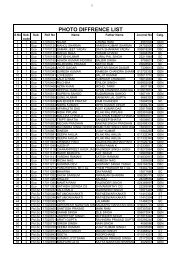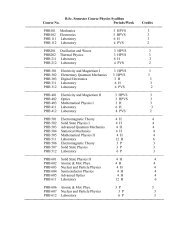View full profile - Jamia Millia Islamia
View full profile - Jamia Millia Islamia
View full profile - Jamia Millia Islamia
You also want an ePaper? Increase the reach of your titles
YUMPU automatically turns print PDFs into web optimized ePapers that Google loves.
production and transmission. Of course, films sometimes result in a brilliant ‘afterlife’ for novels that could notmake a splash or have been forgotten. i Further, while discussing films, the entertainment aspect cannot beoverlooked. Huge investments are made in the production of films and the anxiety to recover costs may propeldirectors to make small compromises to pander to popular taste. Literature is, thus, often made to shed itshighbrow and elitist bias when turned into film and sometimes the ‘self-assertion of the low-brow’, as AshisNandy points out, may threaten to overwhelm the high culture of the middle classes.(Nandy 1995, 198-99)***The experience of reading a novel is certainly different from the experience of watching a film. And it is thisprocess that defies easy translation into film. There are no temporal or spatial constraints while reading a novel.The reader can set her own pace, can stop wherever she wants, can pause and reflect, re-read portions to savourthe lyricism and rhythm of the language and the beauty of the images more <strong>full</strong>y. In allowing such a diffused anddetailed process of reading and appreciation, the novel achieves what may be called a certain “solidity ofspecification” (Henry James’s phrase) that the film lacks. “A novel can afford diffuseness where the film musteconomize” (Bluestone 1957, 50). And yet, films often achieve, through the interplay of three-dimensionalimages, what a literary artist can only aspire at. Contrasting these two modes, Linda Seger, who worked withwell-known directors around the world as a script consultant, says:When we read a novel, we can see only what the narrator shows us at that particular moment. If thenarrator puts the focus on action in those pages, then we follow the action. If the narrator talks aboutfeelings, then we focus on the feelings. We can receive only one piece of information at a time. A novelcan only give us this information sequentially.But film is dimensional. A good scene in a film advances the action, reveals character, exploresthe theme, and builds an image. In a novel, one scene or an entire chapter may concentrate on only one ofthose areas. (Seger1992,16)Further, speed is of utmost essence in a film. The novelist slowly builds up details to set the tone and building theatmospherics. For example, in the novels, Gone With the Wind (1936) or in Pather Panchali (1929) the novelists,Margaret Mitchell and Bibhutibhushan Bandopadhay, respectively, devote more than a hundred pages tointroduce the locale and characters, but the directors, Victor Fleming and Satyajit Ray, had to wrap that up infifteen to twenty minutes in the eponymous films. The pacing in both the mediums is different. Film is and has tobe faster. It builds up details through single and multiple shot images through juxtaposition and collages. “Thecamera can look at a three dimensional object and, in a matter of seconds, get across details that would take7


